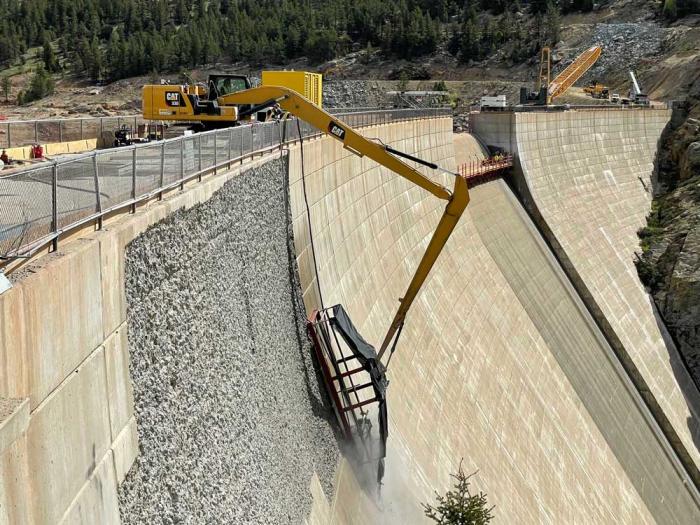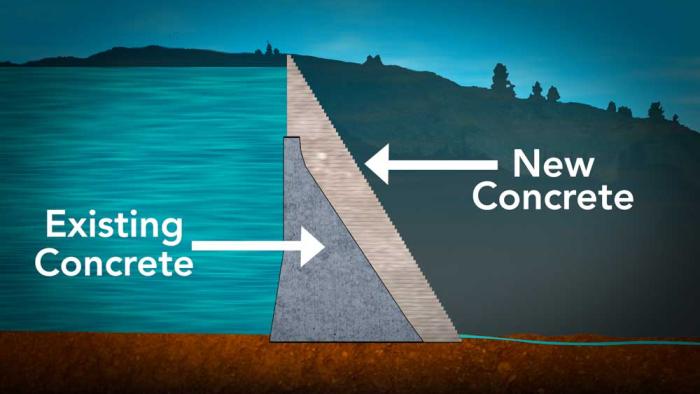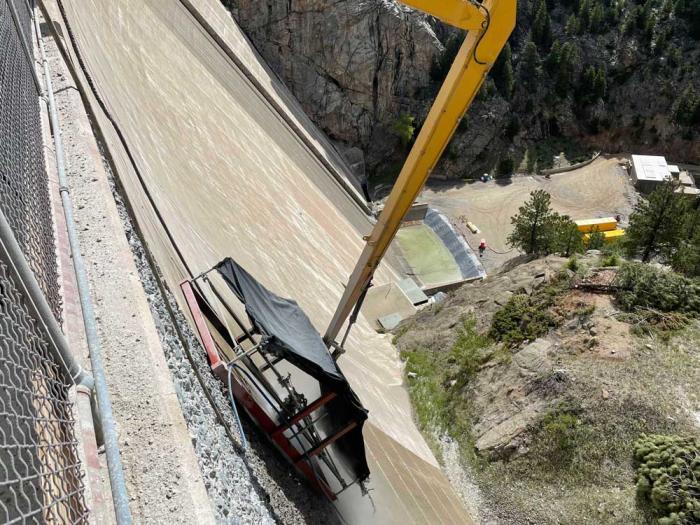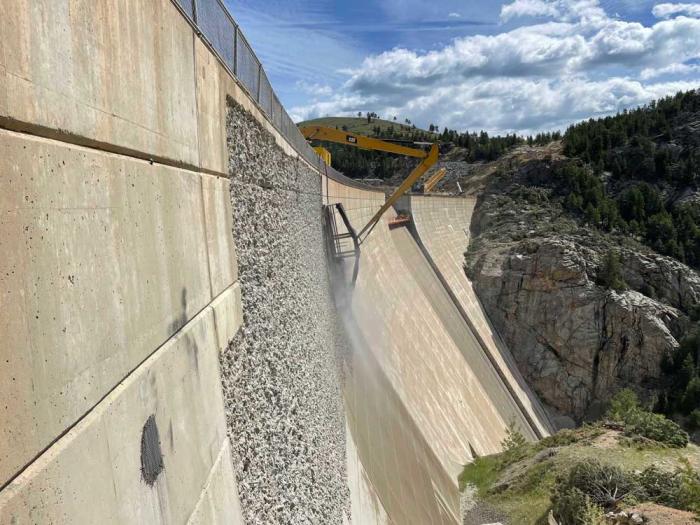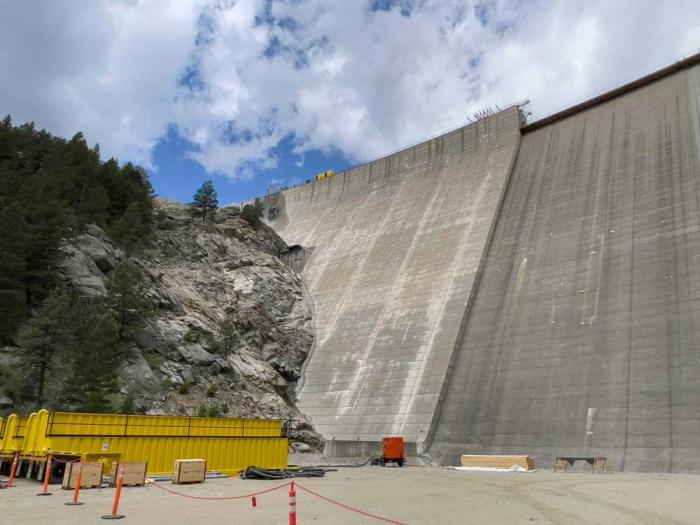Roughing things up at Gross Dam
Using ultrahigh pressure, a specialized team is blasting the front of Gross Dam with water to get the dam ready for its new addition.
The process is called hydrodemolition and is part of the prep work needed for Denver Water’s Gross Reservoir Expansion Project.
The project involves raising the height of Gross Dam by 131 feet, which will nearly triple the reservoir’s water storage capacity and create a more reliable water supply for Denver Water, which provides water to 1.5 million people in the metro area.
“Hydrodemolition is a process we’re using to roughen the surface of the existing concrete on the downstream side of the dam,” said Doug Raitt, construction manager for Denver Water’s Gross Reservoir Expansion Project. “We use high-pressure water to remove about 2 to 3 inches of the concrete.”
Forward interesting info to a friend. Get this from a friend? Subscribe to TAP, a free weekly email that’s dripping with water news!
To raise the dam, construction crews will extend the base by just over 11 feet and build 118 new concrete steps up the face. The roughened surface ensures that the existing concrete will bond with the new concrete that will be added to raise the height of the dam. Once completed, the old and new concrete will become one combined structure.
The specialized work is being done by WALO International, a civil engineering construction company.
The process starts with crews pumping water from Gross Reservoir and running it through a second pump to create the high pressure.
To reach the top 40 feet of the dam, WALO uses an excavator perched on top of the dam to hold a metal frame that houses the water jet.
Learn about changes to recreation at Gross Reservoir during the expansion project.
To reach the lower parts of the dam, crews use “spiders” that are lowered with cables and look like the scaffolds window washing crews use to wash the sides of skyscrapers.
“This process is similar to using a pressure washer to clean your driveway, except in this case we’re using water pressure that’s around 20,000 pounds per square inch to get the job done,” Raitt said.
As the water jets move up, down and across the face of the dam, water and debris fall down, to be captured in a containment pool at the bottom of the dam. The water is filtered in a portable water treatment system and then either reused for the demolition work or used for dust suppression efforts on the construction site.
About 200,000 square feet of concrete on the surface of the dam will be roughed up by the hydrodemolition process, which started in mid-May and is expected to last into the fall.


